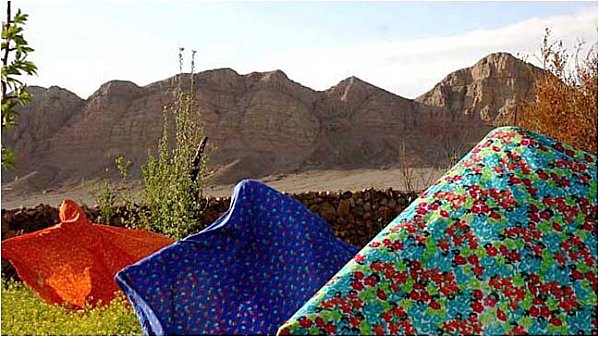Tag Archives: women
Six Pillars – Munira Mirza
The Cultural Advisor to the Mayor explains her reasons for travelling out to the Middle East and promoting a London festival. This interview was recorded at the March Meeting, Sharjah, United Arab Emirates.
Six Pillars – Women and Sex in Iran
Fari Bradley talks to Dr Pari Esfandiari PHD about her website Irandokht, one of the 34 websites showcased by UNESCO. The website creates dialogue and space for expression for Iranian women all over the world and is a resounding success.
Dr Esfandiari also co-wrote a 7 page article in Playboy Magazine in 2007 about an erotic tape that made millions on the blackmarket, highlighting what it tells us about attitudes to women and sex in Iran today.
Six Pillars – Pearls on the Ocean Floor
 This Torture
This Torture
Why should we tell you our love stories
when you spill them together like blood in the dirt?
Love is a pearl lost on the ocean floor,
…or a fire we can’t see,
but how does saying that
push us through the top of the head into
the light above the head?
Love is not
an iron pot, so this boiling energy
won’t help.
Soul, heart, self.
Beyond and within those
is one saying,
How long before
I’m free of this torture!
(by Hafez, C14th)
American director Robert Adanto visits the UK while making his new film. Pearls on the Ocean Floor is a documentary looking at Iranian women artists, born both before and after the revolution, inside and outside of Iran. The narrative is made up of images by the featured artists and other female Iranian artists, and the women speaking to the camera, which affords the film a certain honesty and directness.
The film is screening at the School of Oriental and African Studies, Russell Square with a panel discussion on March 7th 2011, 7-9pm, all welcome.
Six Pillars: Les Ballets Persans & Lady Jamileh Kharrazi

New Iranian National Ballet with Lady Jamila Kharrazi, the Toos Foundation, and Nima Kiann of Les Ballets Persans, Sweden, prior to the gala performance at Logan Hall to mark Les Ballets Persans 6th anniversary.
In a country where dance and performance is highly restricted, ballet seems something left over from the days of the Shas, a testimony to the effects of the identity of countries the west has sought to dominate. Meanwhile we may be familiar with classical scores that have sought to capture the spirit of the middle east with endemic melodies on violin or the standardisation of a sound from the Middle East on the string section, creating a kind of platitude in music for treatment of subjects during the launch of the era of technicolour film (Alad-Din, Sinbad etc).
In an ambitious move, Nima Khiann presents not only the ballet but an entire history of the importance of dance in Persian history, simultaneously dictated in English and Farsi at the gala performance with some sufi dancing by his ballet company, where the girls exchange their trademark buns for the loose, wild hair of a mystic seeker. The sufi tradition, we are told encourages dancing, an irony not lost on an audience comprised of many seeking artistic and spiritual freedom here in the UK.
Lady Jamileh Kharazi discusses the ins and outs of offering events of this size for free and her own extensive background in ballet and performance.
